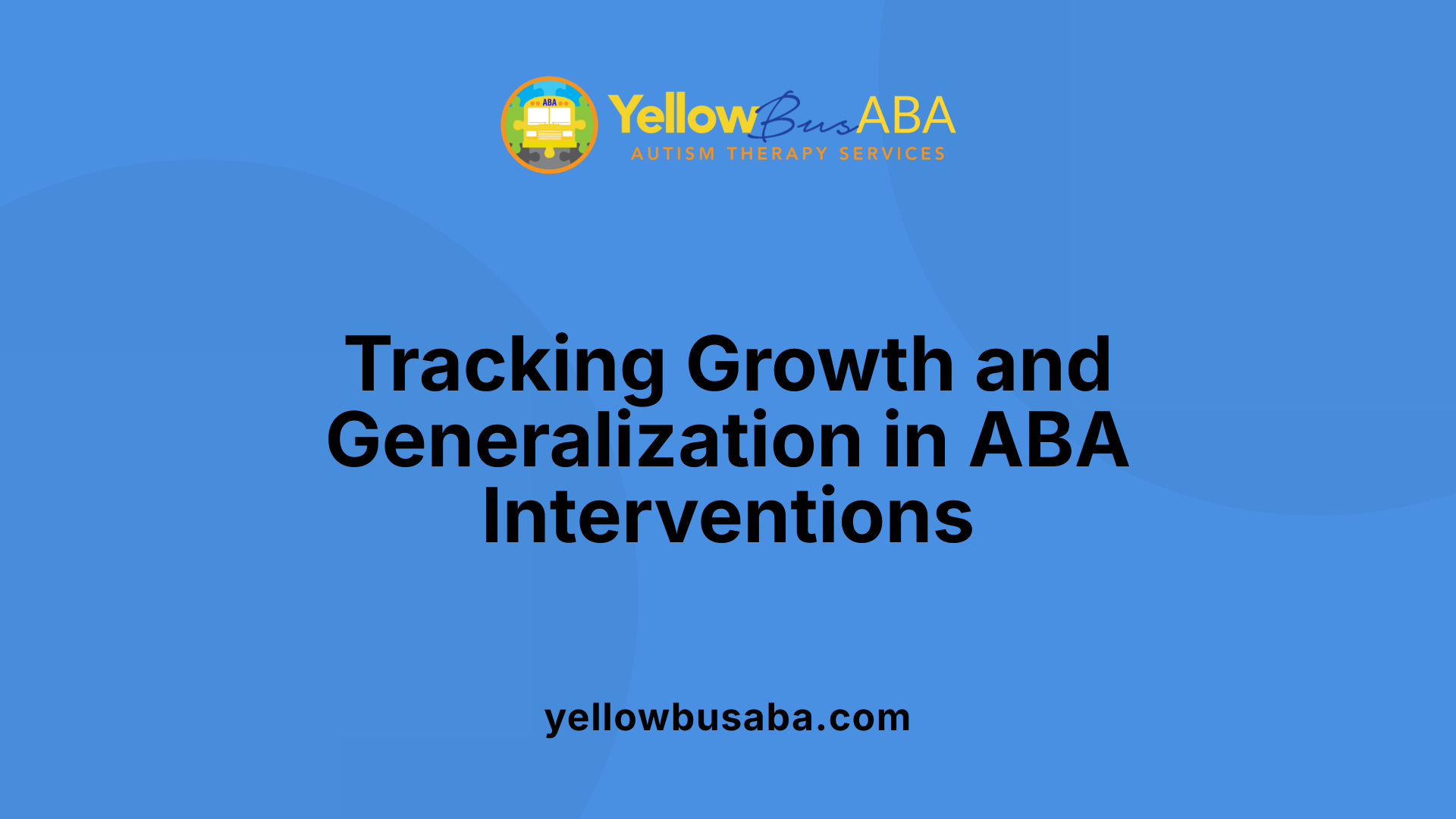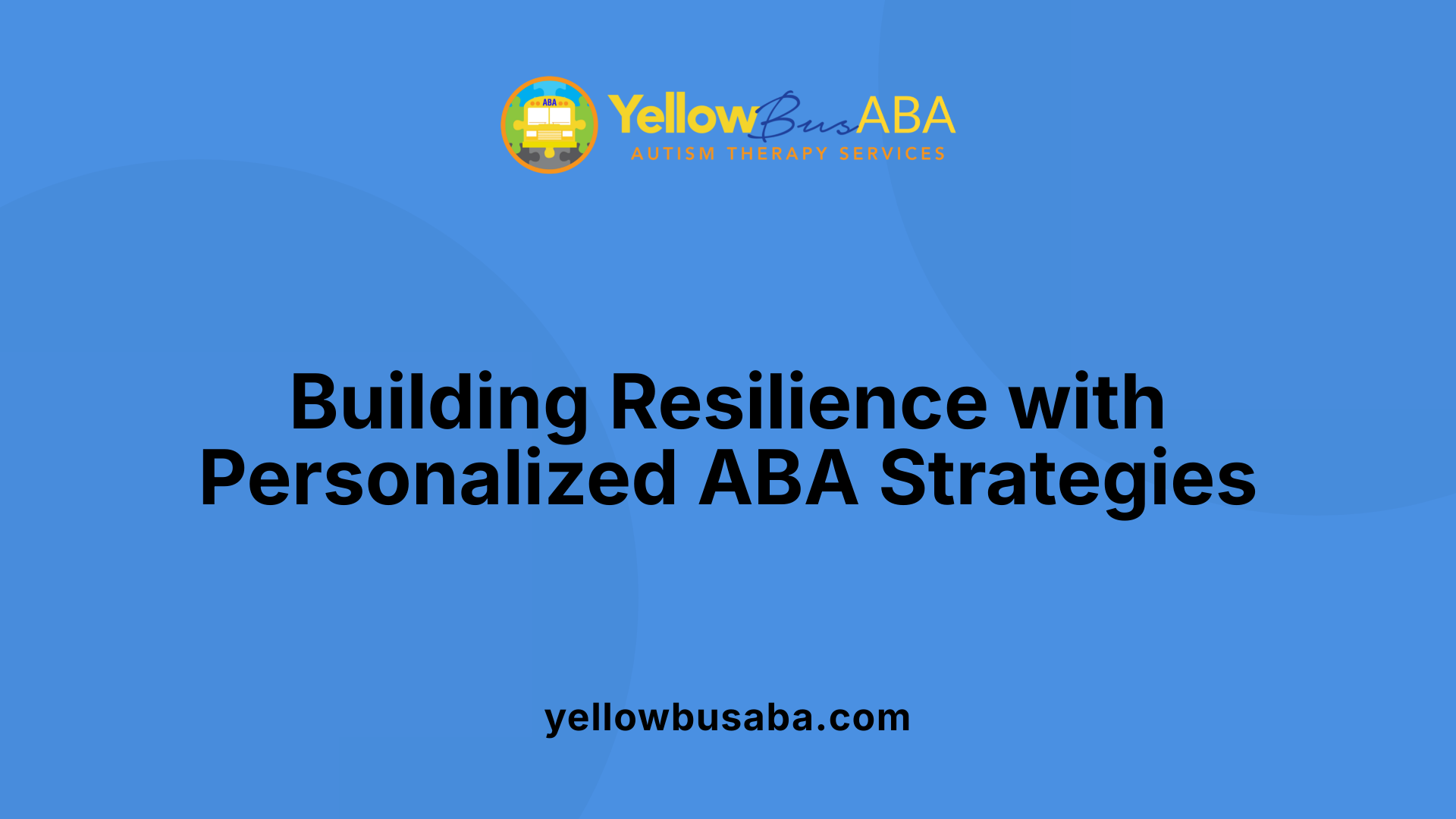Understanding the Impact of ABA Therapy on Emotional Resilience in Children
Building emotional resilience is a crucial aspect of supporting children's mental health and overall development. Applied Behavior Analysis (ABA) therapy is a structured, evidence-based approach that plays a vital role in fostering emotional regulation, coping skills, and social interaction capabilities in children, particularly those with autism spectrum disorder. This article explores how ABA therapy contributes to emotional resilience, describing specific techniques, benefits, and the importance of a collaborative, consistent approach.
Foundations of ABA Therapy and Its Role in Emotional Development
How does ABA therapy contribute to emotional regulation in children?
ABA (Applied Behavior Analysis) therapy significantly supports emotional regulation in children, especially those with autism, by teaching them to understand and manage their feelings. The process involves using visual supports such as emotion charts or social stories, which help children recognize and label their emotional states. These visual aids make abstract feelings more concrete, improving awareness.
Through techniques like role-playing, modeling, and discrete trial training, children learn practical coping strategies such as deep breathing, taking breaks, or using calming devices. Consistent reinforcement of these skills during therapy sessions helps children apply them across various settings, fostering generalization and independence.
ABA therapy also addresses underlying triggers for emotional distress, such as sensory overload or routine changes. By teaching children to recognize these triggers and respond appropriately, it reduces behaviors like tantrums or aggression associated with poor emotional regulation.
Overall, ABA helps children develop adaptive ways to manage their emotions, leading to better social interactions, improved communication, and enhanced well-being.
Techniques and Strategies to Foster Emotional Resilience

What techniques are used in ABA therapy to enhance emotional resilience?
ABA therapy employs several effective methods to help children develop their emotional resilience. Visual aids such as emotion charts and mood meters are used to help children identify and understand different feelings. These tools make it easier for children to recognize their emotional states and express them appropriately.
Role-playing scenarios and modeling suitable responses are also central techniques. These activities allow children to practice healthy ways to respond to various situations, which builds confidence and improves emotional regulation.
In addition, reinforcement strategies are integrated to encourage positive emotional expressions and coping behaviors. Practical tools like deep breathing exercises, sensory supports (for example, noise-canceling headphones or fidget toys), and structured routines are used to reduce anxiety and stress.
Consistent practice of these techniques, paired with data collection and regular assessments, helps tailor interventions to each child's needs. Caregiver involvement is vital, as it ensures these skills are reinforced across different environments—home, school, and community.
Overall, ABA therapy promotes emotional resilience by providing children with the skills to identify, manage, and adapt to their emotions, leading to better social interactions and emotional well-being.
How does ABA therapy contribute to developing emotional resilience in children?
ABA therapy significantly supports children in building emotional resilience. By teaching them to recognize and understand their emotions through visual aids such as emotion charts, mood meters, and social stories, children become more aware of their emotional state. This awareness is crucial for managing feelings effectively.
The use of role-playing and modeling allows children to practice appropriate responses to emotional triggers. Reinforcement methods help solidify these behaviors, making them more automatic over time.
Tools like deep breathing, sensory supports such as calming toys or environmental modifications, and structured routines help reduce feelings of overwhelm. These techniques provide children with practical coping strategies for handling stress or unexpected changes.
Regular, data-informed practice combined with caregiver support ensures these skills are not only learned but also maintained across different settings. This comprehensive approach helps children not just control their emotions but also build the confidence needed for social engagement and everyday challenges.
In summary, ABA therapy fosters resilience by equipping children with the emotional skills necessary for adaptive functioning and emotional growth, enabling them to thrive despite difficulties.
Impact of ABA on Emotional and Social Development

How does ABA therapy impact emotional development and social interactions in children?
ABA therapy plays a vital role in shaping emotional and social skills, especially for children with autism spectrum disorder. By utilizing structured, individualized interventions, it teaches children to understand and express emotions more effectively. Techniques like role-playing, social stories, and video modeling offer concrete examples and real-life practice scenarios.
This approach encourages positive reinforcement, which promotes desirable social behaviors such as sharing, turn-taking, and respectful communication. Children also learn to interpret social cues like facial expressions and body language, which are crucial for meaningful interactions.
Group sessions are an integral part of ABA programs. These provide opportunities for children to practice social skills in a supportive environment, helping them build friendships and practice conflict resolution.
Furthermore, ABA addresses social anxiety by introducing relaxation strategies and using scripted conversations. These tools help children develop confidence in social settings, making it easier to generalize skills across different environments.
Overall, ABA therapy fosters significant improvements in social communication and emotional understanding. This progress supports children's ability to engage more fully with their peers and caregivers, enhancing their emotional well-being and social integration.
Monitoring Progress and Generalization of Skills

How is progress measured in ABA therapy?
Progress in ABA (Applied Behavior Analysis) therapy is carefully tracked using systematic data collection and regular assessments. Therapists observe and record specific behaviors, emotional responses, and the rate at which children acquire new skills. For example, they may log how often a child initiates a conversation or successfully completes a dressing task.
This data is analyzed to evaluate whether intervention strategies are effective. If certain goals are not being met, adjustments can be made to refine approaches. Consistent measurement ensures therapy remains personalized, addressing the child's changing needs. Recognizing both improvements and setbacks allows for timely modifications, fostering steady progress.
Overall, this structured process helps therapists and families understand how well a child is developing their emotional regulation and other essential skills over time.
Conclusion: Building Foundations for a Resilient Future

The importance of consistent, individualized intervention
Consistency and personalization are at the core of successful behavioral and emotional development through ABA therapy. Each child’s needs are unique, which is why interventions are tailored to target specific behaviors, communication skills, social understanding, and emotional regulation strategies. Breaking tasks into manageable steps allows children to acquire skills progressively, boosting confidence and independence. Regular therapy sessions and ongoing collaboration with families and educators ensure these strategies are applied consistently across different environments, reinforcing learning and promoting real-world application. Such individualized intervention helps children build resilience by equipping them with the practical tools necessary to navigate daily challenges and adapt to new situations.
The role of families, educators, and therapists in fostering resilience
A collaborative approach involving families, educators, and trained therapists enhances the effectiveness of ABA therapy and emotional resilience development. Caregivers play a key role in reinforcing skills learned during therapy, practicing positive behaviors, and providing emotional support. They are instrumental in creating a consistent environment that promotes confidence and self-regulation.
Educators also contribute by integrating therapeutic strategies within the classroom, supporting social and academic growth. Therapists, meanwhile, utilize evidence-based techniques, such as positive reinforcement and social skills training, to help children recognize triggers for emotional overwhelm, understand social cues, and develop coping mechanisms.
This team effort ensures that children receive comprehensive support tailored to their individual needs, fostering a stable foundation for resilience. The ongoing dialogue among parents, teachers, and therapists helps track progress, adjust strategies, and celebrate milestones, nurturing a child’s ability to handle stress and maintain emotional balance.
The long-term benefits of ABA therapy in emotional development
ABA therapy not only addresses immediate behavioral challenges but also fosters long-term emotional growth. Through structured techniques like deep breathing, visual aids, role-playing scenarios, and reinforcement strategies, children learn to regulate their emotions effectively. Building emotional resilience helps them manage stress, reduce anxiety, and recover from setbacks more easily.
Studies and ongoing assessments show that children who engage in consistent ABA interventions tend to exhibit improved emotional awareness and expression, forming more meaningful relationships and improving social interactions. Developing these skills early provides a foundation for future success in academic, social, and personal domains.
Furthermore, by addressing triggers like sensory overload and routine changes, ABA therapy helps children understand their emotional responses, promoting a sense of control. This empowerment enables them to face new challenges with confidence and adapt more readily to changes that come with growing older.
Over the long term, these benefits translate into greater independence, resilience, and well-being. Children equipped with emotional regulation strategies and social skills are more likely to lead fulfilling lives, capable of overcoming setbacks and contributing positively to their communities.
| Aspect | Description | Impact |
|---|---|---|
| Individualized Intervention | Tailored plans based on each child's needs | Builds confidence, promotes independence |
| Family Involvement | Reinforcement and support at home | Enhances consistency, generalization of skills |
| Emotional Regulation Techniques | Deep breathing, visual cues, role-playing | Fosters emotional resilience |
| Social Skills Training | Recognizing cues, reciprocal communication | Improves social interactions |
| Long-term Outcomes | Independence, emotional stability | Leads to meaningful, adaptive lives |
This comprehensive approach emphasizes that resilience is a skill that can be developed through consistent, evidence-based practices like ABA therapy. When reinforced by supportive families and educators, children gain vital skills that underpin their ability to thrive despite life’s challenges.
Fostering Lifelong Resilience Through Structured Support
In summary, ABA therapy provides a comprehensive, evidence-based approach to developing emotional resilience in children. By teaching recognition and management of emotions, building coping skills, and enhancing social understanding, ABA lays the foundation for children to navigate life's challenges effectively. The collaborative efforts of therapists, families, and educators are essential in sustaining these gains, ensuring children grow into capable, emotionally resilient individuals capable of leading fulfilling lives.
References
- How ABA Therapy Helps Children Develop Essential Life Skills
- ABA Therapy's Role in Emotional Regulation
- Resilience guide for parents and teachers
- [PDF] Supporting Child and Student Social, Emotional, Behavioral, and ...
- What is Emotional Regulation? Breaking Down the Basics for ABA ...
- Emotion Regulation: Concepts & Practice in Autism Spectrum Disorder
- Practical Strategies to Teach Emotional Regulation Skills in ABA ...
- Simple evidence-based strategies for teaching emotion regulation?
- ABA Therapy's Role in Emotional Regulation
- ABA Therapy's Role in Emotional Regulation






